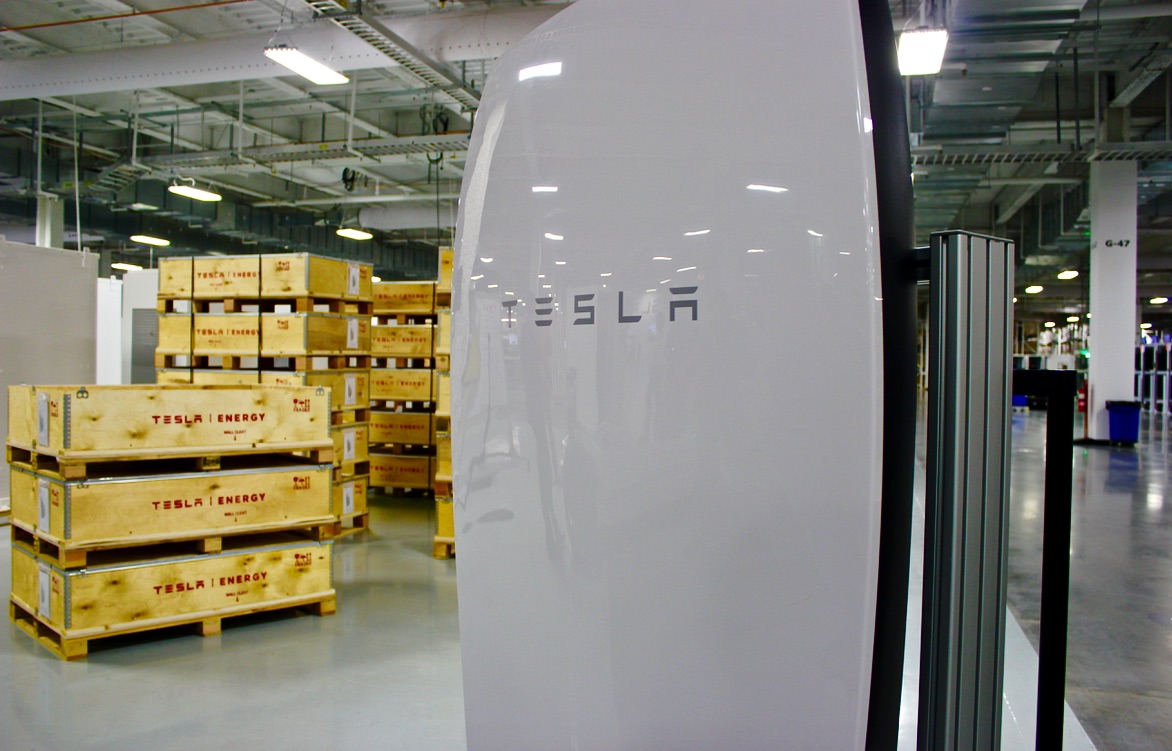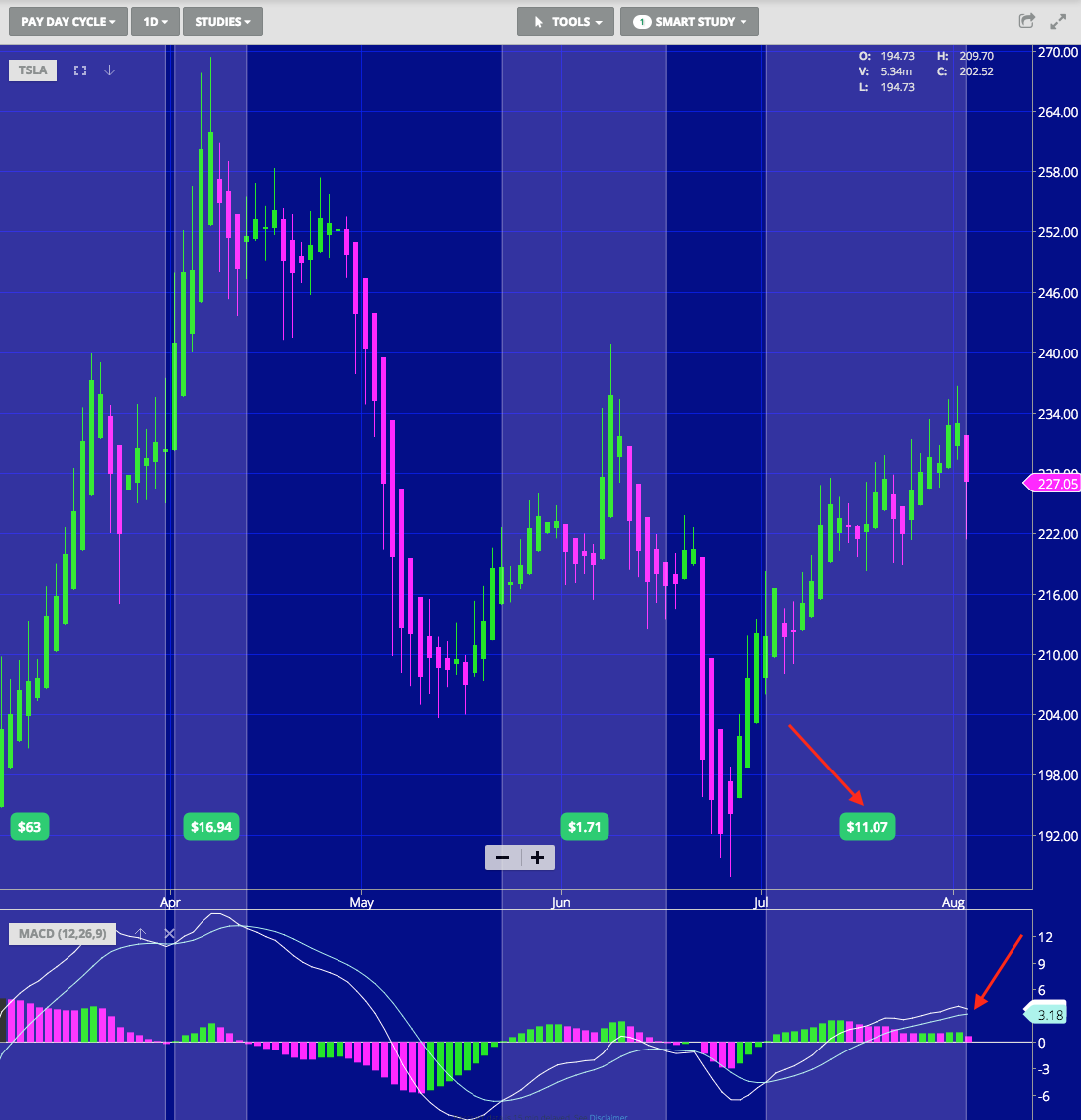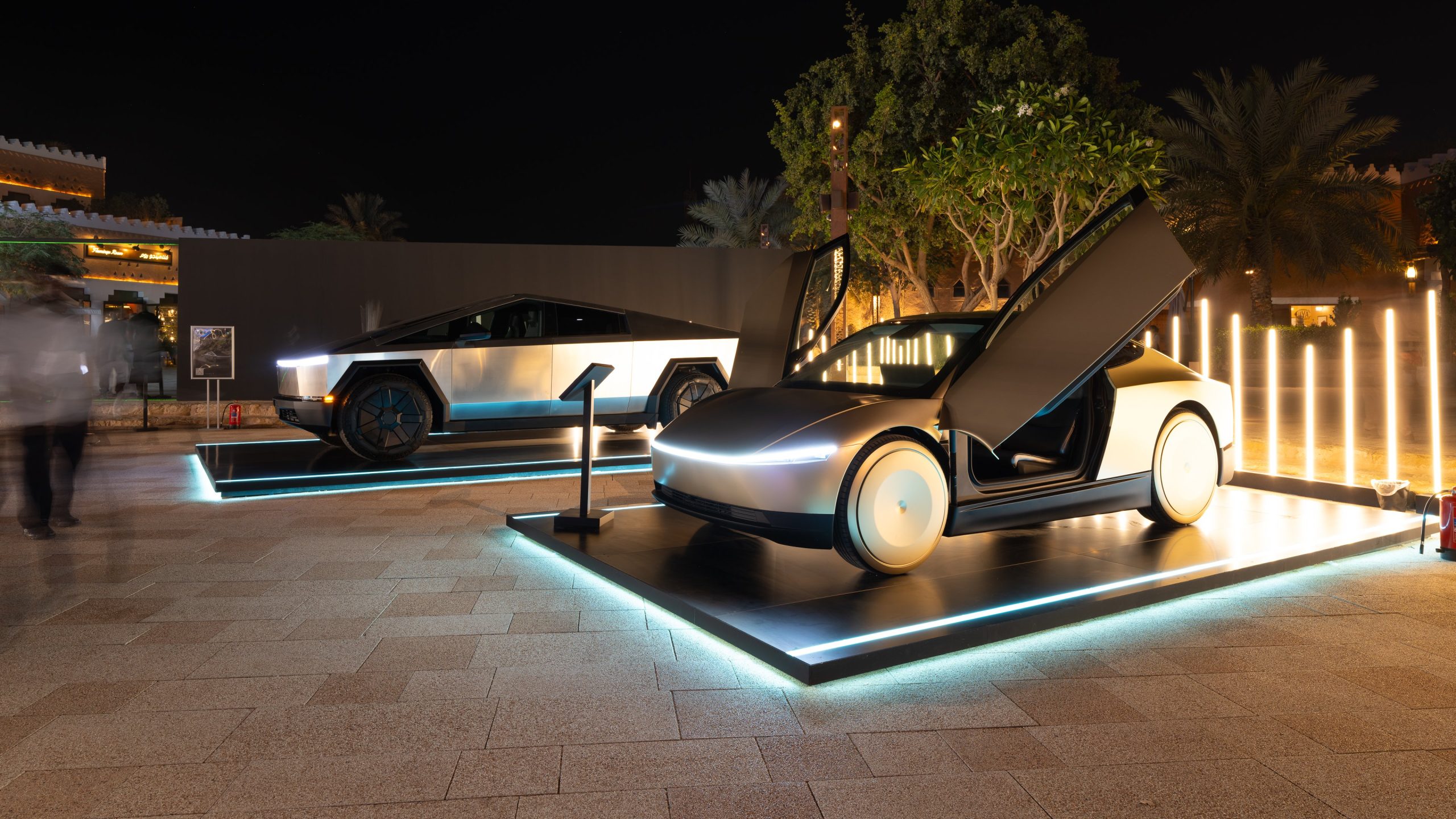Investor's Corner
Tesla – SolarCity merger: the devil is in the details

On Monday August 1st, Tesla announced that it had reached a definitive agreement to acquire SolarCity. Tesla provided investors with an Investor Presentation slide set, and a 180 pages long Form 8-K filing.
Investor Presentation
In the slide presentation titled Tesla to acquire SolarCity, the company provided details for the proposed transaction.
Tesla would acquire SolarCity in an all-stock transaction valued at $2.6 billion. SolarCity shareholders will receive 0.110 shares of Tesla stock for each share of SolarCity valued at $25.37 per share. The transaction is expected to close in Q4 2016 and subject to the approval by a majority of disinterested shareholders at both SolarCity and Tesla, to be voted upon at each respective shareholder meeting.
The Tesla SolarCity “strategic” combination would:
- Accelerate the transition to sustainable energy
- Create world’s only integrated sustainable energy company
- Drive products development and innovation
- Catalyze solar energy adoption
- [Provide] substantial cost efficiencies.
The presentation stated that SolarCity provides best-in-class rooftop solar installation costs of $1.92 per watt as of 4Q15, and is America’s #1 vertically integrated provider of residential and commercial solar, with a 35% share of the residential market and 14% share of the commercial market in 2015. Tesla is the world’s fastest growing car company, with an 18% market share of the “large Luxury sedans” in 2015 with its Model S.
The combined company would leverage Tesla’s design and manufacturing expertise:
- Speed development of beautiful, differentiated and technologically superior products
- Improve solar value proposition by integrating storage, reducing system cost and improving reliability
- Fully integrate product suite for a seamless user experience, delivering an improved, lower-cost product for customers
- Develop products for residential, commercial and grid-scale applications
- Take advantage of SolarCity’s industry-leading project finance capabilities
One of the major points of the slide presentation is that the combined companies would provide “substantial cost efficiencies”, with $150 million of direct cost synergies expected to be achieved in the first full year after closing the transaction.
The cost synergies would be driven by sales and marketing efficiencies, and corporate and overhead savings. The value proposition is improved by lowering hardware costs, reducing installation and service costs, improving manufacturing efficiency, reducing customer acquisition costs, and cutting capital costs.
Form 8-K Filing
The very long document filing includes the usual boilerplate for merger transactions, but also reveals quite a few interesting tidbits, buried into the document. These are quotes from the document.
Stockholders of SolarCity will be asked to vote on the adoption and approval of the Merger Agreement and the Merger, and stockholders of Tesla will be asked to vote on the approval of the Merger and the Share Issuance, at special meetings of the stockholders of SolarCity and Tesla, respectively, that will be held on dates to be announced.
“The Merger Agreement and the Merger be adopted and approved by stockholders of SolarCity, including by the holders of a majority of the total votes of shares of SolarCity common stock […] that are not owned by Mr. Elon Musk and the other directors. other than Nancy E. Pfund and Donald R. Kendall, Jr.”
Similarly, “the Merger and the Share Issuance be approved by the stockholders of Tesla, including by the holders of a majority of the total votes of shares of Tesla common stock […] that are not owned by Mr. Elon Musk and the other directors and the named executive officers of SolarCity and certain of their affiliates.”
This means that the approval will likely rely on mutual fund managers and banks that hold large chunks of both Tesla and SolarCity stock.
As part of the agreement, SolarCity has a 45-day period known as a “go-shop”, which runs through September 14, 2016. This means that SolarCity is allowed to solicit alternative proposals during that time.
The all-stock transaction, with an equity value of $2.6 billion, is based on the 5-day volume-weighted average price of Tesla shares as of July 29, 2016. Under the agreement, SolarCity stockholders will receive 0.110 Tesla common shares per SolarCity share, valuing SolarCity common stock at $25.37 per share based on the 5-day volume weighted average price of Tesla shares as of July 29, 2016.
The “Excluded Company Parties”, i.e. the directors and named executive officers other than Nancy E. Pfund and Donald R. Kendall, Jr., that will not be able to vote at the Company Stockholders Meeting include Lyndon R. Rive, Peter J. Rive, Tanguy V. Serra, Hayden D. Barnard, Seth R. Weissman, Elon Musk, John H.N. Fisher, Antonio Gracias and Jeffrey B. Straubel.
While most stock options equity awards of each company will be automatically converted into stock options of the “merged” company, the stock options set forth in a “Company disclosure letter” shall be cancelled for no consideration. It turns out that these options are the ones that were granted by SolarCity to Lyndon and Peter Rive, the CEO and CTO of SolarCity. These options amounted to about $128 million, and would have been earned over a 10 year period, based on achieving a set of goals of SolarCity stock price and operational results. For some unknown treason, Elon Musk’s cousins will get the shaft in the merger transaction related to their stock options.
But do not feel too bad for the cousins. According to a research report from Reuters, that analyzed the results of the merger, “three of Musk’s relatives, including brother Kimbal Musk and cousins Lyndon Rive and Peter Rive, will own a combined stake of 0.5 percent in Tesla. Kimbal Musk is a director of Tesla.”
According to Reuters “Elon Musk and key institutional investors will probably tighten their control over electric car maker Tesla Motors Inc after it acquires sister company SolarCity Inc.” “The largest institutional shareholder, Fidelity Management and Research, will see its stake grow from 12.2 percent to 13.4 percent. Two Fidelity-managed funds, Fidelity Contrafund and Fidelity OTC, together will control another 7.3 percent, up from 6.5 percent.”
Musk will remain the largest individual shareholder, boosting his stake from 23.2 percent to 25.0 percent according to Reuters.
Note that Fidelity has already come out in favor of the merger.
“Musk, eight major institutional investors and the two Fidelity funds control 45.7 percent of Tesla. After the merger, the same group’s combined stake will rise to 49.0 percent.” “Other major institutional shareholders include Scottish investment manager Bailie Gifford & Co, which will maintain an 8.9 percent stake in the combined companies; T. Rowe Price Associates, 5.5 percent, and Vanguard Group, 3.6 percent. Big banks, including several Tesla lenders, also will maintain significant stakes after the merger: Bank of Montreal, 4.1 percent; Morgan Stanley, 3.0 percent; Goldman Sachs, 2.2 percent, and J.P. Morgan Chase, 1.0 percent.”
What this all means is that individual investors will have no say in the approval of the merger, and only a few more institutional investors are needed, besides Fidelity, to approve the merger. The only thing that could derail the merger is a third party bid for SolarCity, during the go-shop period. Given how debt ridden is SolarCity, the chance of of such a bid are fairly remote.
Market Reaction
The initial market reaction to the details of the merger agreement was mixed, but eventually turned negative. On Monday the stock reached $236, but closed at $229. On Tuesday the stock initially sold off even more to $221, closing the session at $227.
Looking at the chart, The MACD has started pinching, indicating a possible end of the MACD-run that started on July 1st. Anyone selling today would have had a nice $11 gain, over a 1-month period, a very nice return. I personally closed my July 1st call option trade (I was long Sept 230 calls) when TSLA reached $236 on Monday. I was planning to close my trade before the Quarterly report is released on Wednesday, and the high point of Monday made it a perfect exit. Notice that I never hold options or stock before a quarterly report, especially for a volatile stock as TSLA, as the post report swings are so wide that one can easily lose their shirt in the the span of a few hours.

Source: Wall Street I/O

Investor's Corner
SpaceX IPO is coming, CEO Elon Musk confirms
However, it appears Musk is ready for SpaceX to go public, as Ars Technica Senior Space Editor Eric Berger wrote an op-ed that indicated he thought SpaceX would go public soon. Musk replied, basically confirming it.

Elon Musk confirmed through a post on X that a SpaceX initial public offering (IPO) is on the way after hinting at it several times earlier this year.
It also comes one day after Bloomberg reported that SpaceX was aiming for a valuation of $1.5 trillion, adding that it wanted to raise $30 billion.
Musk has been transparent for most of the year that he wanted to try to figure out a way to get Tesla shareholders to invest in SpaceX, giving them access to the stock.
He has also recognized the issues of having a public stock, like litigation exposure, quarterly reporting pressures, and other inconveniences.
However, it appears Musk is ready for SpaceX to go public, as Ars Technica Senior Space Editor Eric Berger wrote an op-ed that indicated he thought SpaceX would go public soon.
Musk replied, basically confirming it:
As usual, Eric is accurate
— Elon Musk (@elonmusk) December 10, 2025
Berger believes the IPO would help support the need for $30 billion or more in capital needed to fund AI integration projects, such as space-based data centers and lunar satellite factories. Musk confirmed recently that SpaceX “will be doing” data centers in orbit.
AI appears to be a “key part” of SpaceX getting to Musk, Berger also wrote. When writing about whether or not Optimus is a viable project and product for the company, he says that none of that matters. Musk thinks it is, and that’s all that matters.
It seems like Musk has certainly mulled something this big for a very long time, and the idea of taking SpaceX public is not just likely; it is necessary for the company to get to Mars.
The details of when SpaceX will finally hit that public status are not known. Many of the reports that came out over the past few days indicate it would happen in 2026, so sooner rather than later.
But there are a lot of things on Musk’s plate early next year, especially with Cybercab production, the potential launch of Unsupervised Full Self-Driving, and the Roadster unveiling, all planned for Q1.
Investor's Corner
Tesla Full Self-Driving statistic impresses Wall Street firm: ‘Very close to unsupervised’
The data shows there was a significant jump in miles traveled between interventions as Tesla transitioned drivers to v14.1 back in October. The FSD Community Tracker saw a jump from 441 miles to over 9,200 miles, the most significant improvement in four years.

Tesla Full Self-Driving performance and statistics continue to impress everyone, from retail investors to Wall Street firms. However, one analyst believes Tesla’s driving suite is “very close” to achieving unsupervised self-driving.
On Tuesday, Piper Sandler analyst Alexander Potter said that Tesla’s recent launch of Full Self-Driving version 14 increased the number of miles traveled between interventions by a drastic margin, based on data compiled by a Full Self-Driving Community Tracker.
🚨 Piper Sandler reiterated its Overweight rating and $500 PT on Tesla $TSLA stock
Analyst Alexander Potter said FSD is near full autonomy and latest versions showed the largest improvement in disengagements, from 440 miles to 9,200 miles between critical interventions pic.twitter.com/u4WCLfZcA9
— TESLARATI (@Teslarati) December 9, 2025
The data shows there was a significant jump in miles traveled between interventions as Tesla transitioned drivers to v14.1 back in October. The FSD Community Tracker saw a jump from 441 miles to over 9,200 miles, the most significant improvement in four years.
Interestingly, there was a slight dip in the miles traveled between interventions with the release of v14.2. Piper Sandler said investor interest in FSD has increased.
Full Self-Driving has displayed several improvements with v14, including the introduction of Arrival Options that allow specific parking situations to be chosen by the driver prior to arriving at the destination. Owners can choose from Street Parking, Parking Garages, Parking Lots, Chargers, and Driveways.
Additionally, the overall improvements in performance from v13 have been evident through smoother operation, fewer mistakes during routine operation, and a more refined decision-making process.
Early versions of v14 exhibited stuttering and brake stabbing, but Tesla did a great job of confronting the issue and eliminating it altogether with the release of v14.2.
Tesla CEO Elon Musk also recently stated that the current v14.2 FSD suite is also less restrictive with drivers looking at their phones, which has caused some controversy within the community.
Although we tested it and found there were fewer nudges by the driver monitoring system to push eyes back to the road, we still would not recommend it due to laws and regulations.
Tesla Full Self-Driving v14.2.1 texting and driving: we tested it
With that being said, FSD is improving significantly with each larger rollout, and Musk believes the final piece of the puzzle will be unveiled with FSD v14.3, which could come later this year or early in 2026.
Piper Sandler reaffirmed its $500 price target on Tesla shares, as well as its ‘Overweight’ rating.
Investor's Corner
Tesla gets price target boost, but it’s not all sunshine and rainbows

Tesla received a price target boost from Morgan Stanley, according to a new note on Monday morning, but there is some considerable caution also being communicated over the next year or so.
Morgan Stanley analyst Andrew Percoco took over Tesla coverage for the firm from longtime bull Adam Jonas, who appears to be focusing on embodied AI stocks and no longer automotive.
Percoco took over and immediately adjusted the price target for Tesla from $410 to $425, and changed its rating on shares from ‘Overweight’ to ‘Equal Weight.’
Percoco said he believes Tesla is the leading company in terms of electric vehicles, manufacturing, renewable energy, and real-world AI, so it deserves a premium valuation. However, he admits the high expectations for the company could provide for a “choppy trading environment” for the next year.
He wrote:
“However, high expectations on the latter have brought the stock closer to fair valuation. While it is well understood that Tesla is more than an auto manufacturer, we expect a choppy trading environment for the TSLA shares over the next 12 months, as we see downside to estimates, while the catalysts for its non-auto businesses appear priced at current levels.”
Percoco also added that if market cap hurdles are achieved, Morgan Stanley would reduce its price target by 7 percent.
Perhaps the biggest change with Percoco taking over the analysis for Jonas is how he will determine the value of each individual project. For example, he believes Optimus is worth about $60 per share of equity value.
He went on to describe the potential value of Full Self-Driving, highlighting its importance to the Tesla valuation:
“Full Self Driving (FSD) is the crown jewel of Tesla’s auto business; we believe that its leading-edge personal autonomous driving offering is a real game changer, and will remain a significant competitive advantage over its EV and non-EV peers. As Tesla continues to improve its platform with increased levels of autonomy (i.e., hands-off, eyes-off), it will revolutionize the personal driving experience. It remains to be seen if others will be able to keep pace.”
Additionally, Percoco outlined both bear and bull cases for the stock. He believes $860 per share, “which could be in play in the next 12 months if Tesla manages through the EV-downturn,” while also scaling Robotaxi, executing on unsupervised FSD, and scaling Optimus, is in play for the bull case.
Will Tesla thrive without the EV tax credit? Five reasons why they might
Meanwhile, the bear case is placed at $145 per share, and “assumes greater competition and margin pressure across all business lines, embedding zero value for humanoids, slowing the growth curve for Tesla’s robotaxi fleet to reflect regulatory challenges in scaling a vision-only perception stack, and lowering market share and margin profile for the autos and energy businesses.”
Currently, Tesla shares are trading at around $441.








